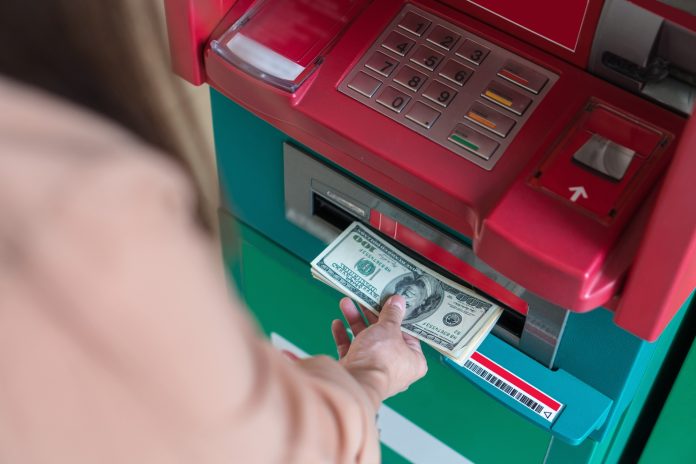Launching an ATM business presents a remarkable chance to earn passive income. Imagine this: automated teller machines positioned in busy locations, generating revenue while you rest. This guide will equip you with the necessary steps to launch your ATM venture.
Uncover critical strategies for choosing optimal locations, understanding legal obligations, and ensuring your machines run smoothly. With careful planning and a solid business strategy, you can create a successful ATM business that delivers profits for years to come.
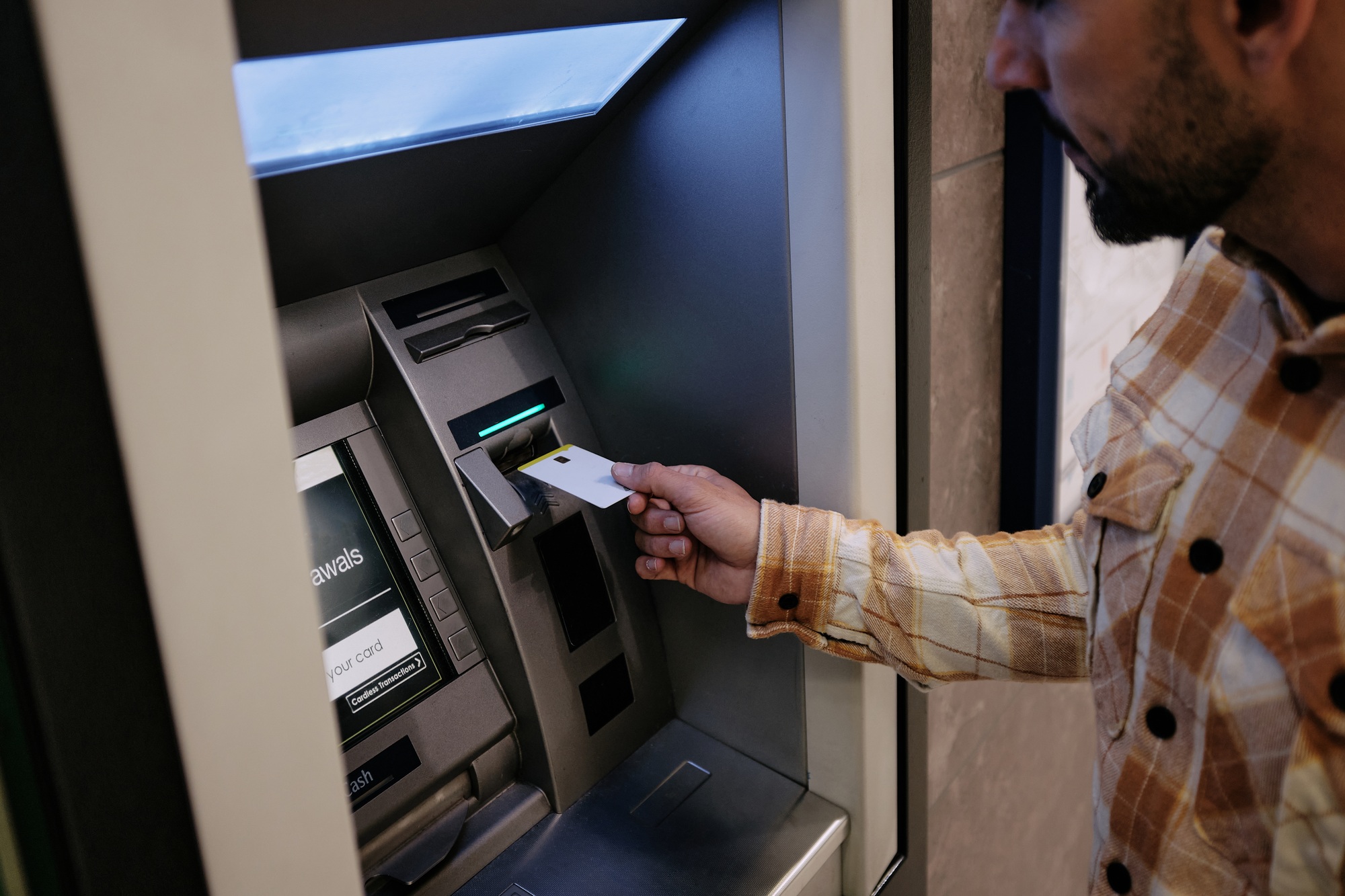
Understanding the ATM Business
Starting an ATM business is like planting a money tree—nurture it right, and it will thrive! How can you make sure its success?
Begin with thorough market research to identify prime locations. Target high-traffic areas such as convenience stores, gas stations, and retail outlets. These spots are cash magnets, attracting a steady flow of customers.
Next, consider your ATM equipment. You can purchase or lease machines, but the right choice can remarkably influence your transaction fees. Each withdrawal at your ATM generates a surcharge—imagine earning money while you sleep! This is the allure of passive income.
Set up a dedicated bank account for your business to organize your finances and track your cash flow. Understanding the legal and regulatory requirements for operating ATMs is also necessary to make sure compliance.
As your business expands, reinvest your profits to grow your ATM network. With strategic planning, you can turn your ATM business into a lucrative venture. For more insights, check out this guide on launching your ATM business!
Overview of the ATM Business
The ATM business is a lucrative venture, generating passive income through transaction fees with every cash withdrawal. Imagine owning a machine that works tirelessly, like a dedicated employee, delivering revenue with minimal effort. But how do you kickstart this profitable journey?
Begin with in-depth market research to identify high-traffic locations such as convenience stores and gas stations. The more users your ATM attracts, the higher your earnings. Think of it as planting seeds in fertile soil; the right location can yield a bountiful harvest.
Next, analyze your financial projections. Determine the amount of cash needed in the machine—this is your vault cash. Don’t overlook operational costs like ATM maintenance and transaction processing fees. A solid business plan will steer you through these financial waters.
At last, make sure compliance with all legal and regulatory requirements. This includes obtaining necessary licenses and understanding PCI compliance. Just as a ship needs a captain to steer, your ATM business requires clear direction to sail smoothly.
By following these steps, you can effectively start an ATM business and enjoy a steady income stream. For further insights, check out this helpful guide.
Benefits of Starting an ATM Business
Starting an ATM business can transform your financial future. Imagine a steady stream of passive income flowing in, effortlessly enhancing your wealth. With low maintenance and predictable transaction fees, your ATMs can generate revenue while you focus on other interests.
Consider this: placing your machines in high-traffic locations like gas stations or convenience stores acts like a cash magnet. The more customers seeking cash, the more transactions you’ll enjoy, boosting your profits. Once your ATM is operational, it runs 24/7, much like a dedicated employee who never takes a break!
The ATM market is booming. As businesses recognize the need for easy cash access, your ATM network can grow, creating multiple revenue streams. With strategic planning and thorough market research, you can identify prime locations for your machines, ensuring consistent cash flow and steady customer acquisition.
Are you ready to seize this opportunity?
Launching an ATM business not only places you in a lucrative industry but also offers the freedom of entrepreneurship. Remember, your success hinges on location selection and a deep understanding of your target market.
For more insights on the potential of owning an ATM, check out this article on common myths.
ATM Sales and Equipment
Understanding ATM sales and equipment is critical for building a thriving ATM business. Think of an ATM as a cash-dispensing mini-store; its success relies on selecting the right equipment and securing a prime location. Opt for ATM machines that cater to your target audience, ideally placed in convenience stores or gas stations with heavy foot traffic.
- Types of ATMs: Choose between through-the-wall models for busy areas and stand-alone units for versatility.
- Transaction Fees: These fees serve as your ATM’s paycheck, generating critical revenue.
- Market Research: Conduct thorough analysis to identify the optimal locations for your machines.
Consider operational costs, including maintenance and cash management. A solid business plan is necessary for monitoring cash flow and assessing your ATMs’ cash needs.
Building relationships with financial institutions can provide valuable support and resources for your ATM network. Remember, choosing the right ATM location is like finding the ideal spot for a lemonade stand on a hot day—it can make all the difference!
For an in-depth exploration of launching your ATM business, check out this complete guide that covers everything from equipment selection to legal requirements.
Market Research and Location Analysis
Launching your own ATM business demands thorough market research and location analysis, much like choosing the right ingredients for a successful recipe. Imagine baking without accurate measurements—your cake could collapse! In the same way, placing your ATM machines in poor locations can spell financial trouble.
Start by identifying your target market. Are you focusing on busy shoppers at convenience stores or patrons at gas stations? Understanding customer demographics and foot traffic is critical for ensuring your ATMs generate a steady income from transaction fees.
Concentrate on high-traffic zones where cash is frequently needed. Visibility and accessibility are paramount; a prime location can dramatically improve your profits. Plus, analyze your competitors to uncover market gaps ripe for your business.
At last, develop a complete business plan detailing your financial projections and operational costs. Think of it as your GPS; without it, you risk losing your way in the complicated place of managing an ATM network.
Conduct Market Research
Conducting market research is like being a detective for your ATM business. You must uncover valuable insights about your target market and competition. Ask yourself: Where will you place your ATMs?
Locations like convenience stores and gas stations are treasure troves because of their high foot traffic. Explore into into customer demographics and transaction fees to optimize your surcharge revenue.
Follow these critical steps for effective market research:
- Identify your target market: Who needs cash the most?Think about local businesses and their customers.
- Analyze competition: What services do other ATM operators provide?How can you stand out?
- Evaluate potential locations: Look for areas with high transaction volumes and minimal competition.
- Understand cash needs: Determine how much cash each ATM requires to satisfy demand.
Thorough market research equips you to develop a business plan that sets you up for success in the ATM industry!
Location Types
Location Types are critical for your ATM business. Think of it like hiding a treasure chest; the busier the area, the more gold you can find! High-traffic spots, such as convenience stores and gas stations, are perfect for boosting transaction fees and surcharge revenue.
Consider your target market and their cash needs. Are they likely to withdraw money?
Locations near retail stores or financial institutions often see higher usage. Conducting thorough market research is necessary for identifying these high-volume locations where your ATM machines can thrive.
Don’t overlook the operational costs associated with each site. Some locations may require more ATM maintenance or involve higher capital requirements for installation. A solid business plan that emphasizes strategic site selection is critical for your success!
Finding Locations
Finding the ideal ATM location is like discovering hidden treasure; the right spot can open up substantial rewards! Start with thorough market research. Focus on high-traffic areas such as convenience stores and gas stations, where cash transactions flourish.
Next, analyze your target market and their demographics. Will they need an ATM?
Observe foot traffic and assess nearby ATM operators. This evaluation uncovers your potential competitive advantage in the ATM business.
Once you pinpoint a promising site, negotiate favorable terms with the property owner. A solid business plan is necessary for success. Don’t forget to account for operational expenses, including vault cash and maintenance costs!
Financial Considerations
Starting an ATM business is like planting a money tree, but what financial considerations should you keep in mind?
Initial, assess your startup capital. How much will your initial ATM machine cost?
Prices usually range from $2,000 to $10,000, and let’s not forget the vault cash you’ll need to stock it.
Next, consider transaction fees. The average fee is around $3 per transaction. If your ATM is in a high-traffic area, like a convenience store or gas station, you could see a steady stream of customers. How many transactions do you expect daily?
This will greatly influence your cash flow and in general revenue.
Don’t forget about operational costs, such as maintenance, bank account fees, and PCI compliance expenses. A solid business plan is critical for managing these costs effectively. Consider small business loans or crowdfunding platforms to cover initial expenses. Building relationships with financial institutions can also open up better financing options.
Conducting thorough market research and strategic planning will turn your ATM venture from a mere idea into a profitable reality!
Estimated Capital Required
Starting an ATM business demands a solid understanding of the estimated capital required. Think of it like building a treehouse: without the right materials, you can’t reach new heights! Your initial investment usually ranges from $3,000 to $10,000, covering the ATM purchase, installation, and vault cash.
Key expenses for consideration include:
- ATM Equipment: Costs vary based on the type, whether wall-mounted or free-standing.
- Location Fees: Secure agreements with business owners to place your machine in high-traffic areas like convenience stores or gas stations.
- Operational Costs: Include maintenance, cash replenishment, and transaction fees.
Have you thought about maximizing your surcharge revenue? A well-crafted business plan is critical for forecasting cash flow and identifying target markets.
Personal Savings
Personal savings are the lifeblood of your ATM business. Think of your savings as the fuel for your entrepreneurial engine; without it, how far can you really go?
Investing in ATM machines unlocks a stream of revenue through transaction fees.
Before diving in, conduct thorough market research. Identify high-traffic locations like convenience stores and gas stations—these are cash flow goldmines. Also, understand the legal and regulatory requirements to keep your ATM operations compliant and efficient.
Develop a solid business plan to forecast potential profits and outline your reinvestment strategy. Are you ready to transform your savings into a successful venture?
Small Business Loans
Looking to fund your ATM business? Think of small business loans as the fuel for your entrepreneurial engine. Just as a car needs gas to drive, your business requires capital to thrive. These loans empower you to buy ATM machines, cover operational costs, and maintain healthy cash flow.
Before applying for a loan, ask yourself: What are my cash needs? A solid business plan acts as your roadmap, detailing financial projections and highlighting your revenue potential. With careful planning and an understanding of transaction fees, you can manage your loan wisely and reinvest profits into your growing ATM network.
Consider options like crowdfunding platforms or loans from financial institutions. Each choice can remarkably impact your success. Remember, securing funding is just the initial step; building strong relationships with ATM operators and ensuring PCI compliance are critical for long-term growth.
ATM Machine Costs
Diving into an ATM business is like leaping into a pool—exciting but risky without preparation. The initial investment for an ATM machine ranges from $1,000 to $10,000, influenced by the model and features. Have you considered where to place your machine?
High-traffic locations such as convenience stores and gas stations can dramatically increase transaction fees and improve your cash flow.
Remember to factor in maintenance costs and vault cash to keep your machine running smoothly. Think of it like a vending machine that needs regular restocking to keep the profits flowing. Opening a business bank account is necessary for managing operational costs and maintaining financial clarity. Are you ready to steer these financial waters and successfully launch your ATM business?
Creating a Business Plan
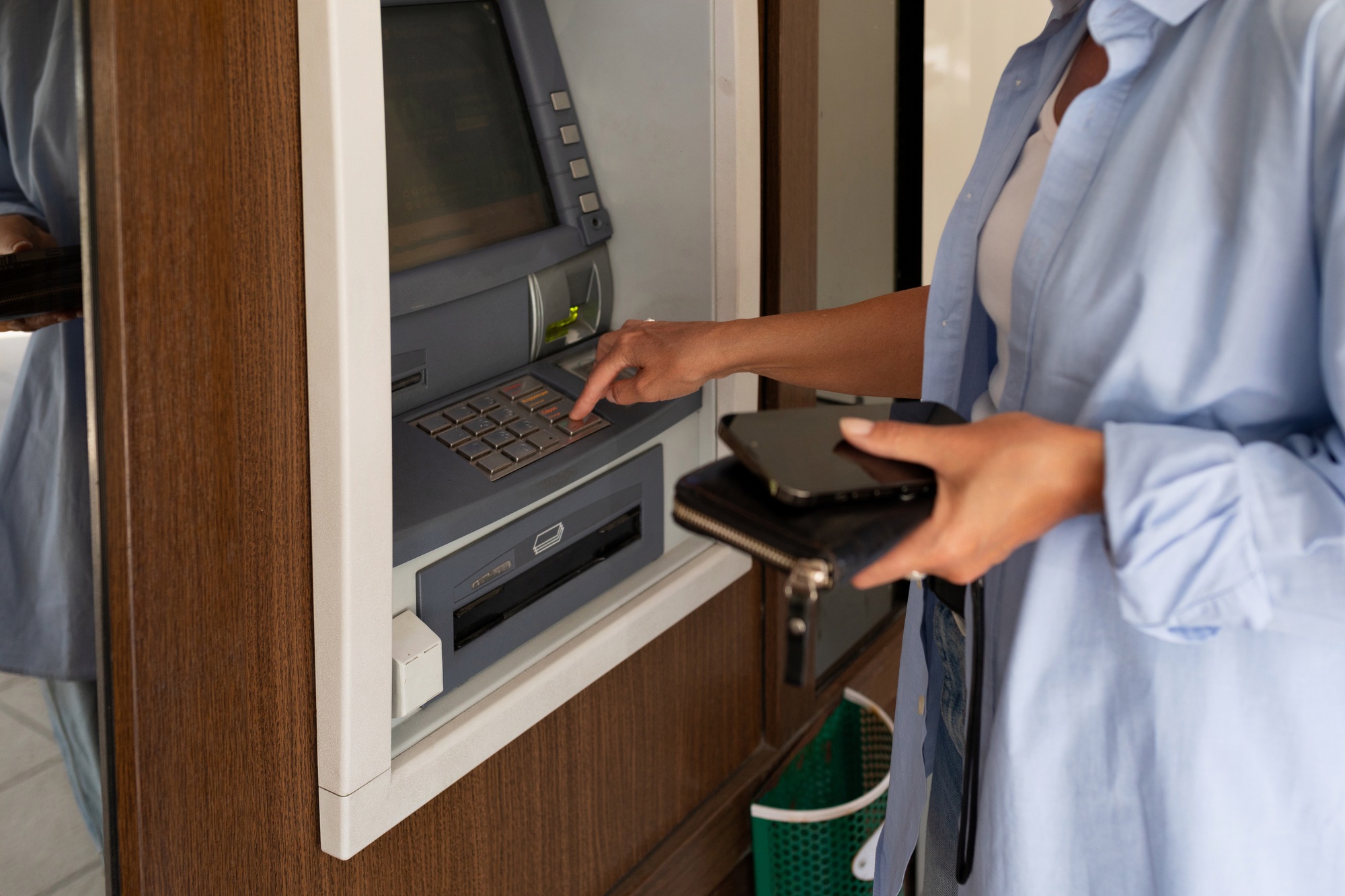
Creating a business plan for your ATM business is like building a sturdy bridge; it transforms your vision into reality. What makes a plan truly effective?
A strong plan clearly outlines your goals, budget, and actionable steps to turn aspirations into achievements. Think of it as your roadmap, guiding you through market research, location selection, and a thorough understanding of your target market.
Your plan should include:
- Market Analysis: Identify high-traffic spots like convenience stores and gas stations.
- Financial Projections: Estimate cash flow and surcharge revenue from ATM transactions.
- Legal Requirements: Understand the legal and regulatory requirements for operating ATMs.
Without a detailed plan, you risk drifting aimlessly, like a ship lost at sea. Are you ready to jump in and create your ATM business plan? This isn’t just paperwork; it’s your blueprint for success!
Business Structure
Choosing the right business structure is like laying the foundation for a skyscraper; it determines how high you can reach. You have several options: a sole proprietorship, where you steer alone, or a limited liability company (LLC), which acts as a protective shield for your personal assets. Each structure carries unique legal and regulatory requirements that influence your cash flow and taxes.
- Sole Proprietorship: Simple and affordable, but all liabilities fall on you.
- Partnership: Share profits and losses, but joint liability can lead to disputes.
- LLC: Safeguards personal assets while allowing management flexibility.
- C Corporation: Complex and subject to double taxation, yet it paves the way for growth.
- S Corporation: Avoids double taxation but limits the number of shareholders.
As you choose a structure, consider your target market and business goals. A solid business plan will steer you through this critical decision and make sure you meet legal requirements.
Potential Income Sources
Starting an ATM business unlocks a world of potential income sources. Think of it as planting a tree; with the right care, it bears fruit over time. Your main revenue comes from transaction fees, usually ranging from $2 to $3 per use. In busy locations, one machine can generate hundreds of dollars monthly. Can you picture the possibilities with each transaction?
- Location Selection: Choose high-traffic spots like convenience stores and gas stations to optimize customer visits.
- ATM Network: Join an ATM network to improve visibility and attract more users.
- Reinvest Profits: Use your earnings to acquire additional machines, expanding your market presence.
Performing thorough market research helps you identify prime locations and tailor your services to meet customer needs. This strategic mindset can create a consistent cash flow, ensuring your ATM business thrives.
Ongoing Expenses
Ongoing Expenses in an ATM business are the lifeblood of your operations—constant and critical. These expenses include maintenance costs, transaction fees, and cash replenishment. Think of them as the fuel that keeps your ATM running; without meticulous budgeting, your business could stall, just like a car running out of gas.
- Maintenance: Regular upkeep is necessary to avoid expensive downtime.
- Transaction Fees: Each transaction comes with fees that can remarkably affect your cash flow.
- Cash Replenishment: Testing enough vault cash on hand is critical to satisfy customer demand.
Understanding these ongoing expenses is like learning the rules of a game; it equips you to strategize effectively and succeed in your ATM business.
Pricing Strategy
Developing a pricing strategy is critical for your ATM business. Think of it as crafting an irresistible invitation to a performance: the right price captivates your audience. What if you set your transaction fee at $2.66, the national average? This could yield significant surcharge revenue, especially in high-traffic locations like convenience stores and gas stations.
Imagine this: with just 10 transactions daily, you could earn nearly $800 each month! But pricing isn’t just about figures; it’s about grasping your target market and their spending habits. Engage in market research to uncover what potential customers are willing to pay.
Your pricing should also reflect your business plan. Are you focused on maximizing cash flow or building lasting partnerships with business owners? A strategic pricing approach will guide you toward achieving your business goals.
Setting Up Your ATM Business

Starting your own ATM business is like Begining on a treasure hunt in a busy city. The initial step?
Conduct thorough market research. Think of it as using a treasure map to locate the best spots where people need cash, such as convenience stores, gas stations, and retail outlets.
Next, consider your ATM purchase options: will you buy or lease?
This choice is like deciding between a shiny new bike and a trusty used one—each has its benefits! Once you secure your ATM machines, pinpointing the right location is necessary. A high-traffic area can remarkably increase your transaction fees.
Don’t overlook the legal and regulatory requirements. Just as a pirate needs a license to sail, you’ll require the proper business licenses and a bank account to manage your cash flow. Establishing strong merchant partnerships will streamline operations, ensuring your ATMs run smoothly.
At last, reinvest your profits to expand your ATM network. Strategically placing multiple machines can create a steady stream of passive income. With smart planning, your ATM business can flourish, much like a treasure chest overflowing with gold!
Choosing and Purchasing ATMs
Choosing the right ATM machines is akin to selecting the ideal tools for a craftsman; the right choice can lift your business model. Start with thorough market research to identify high-traffic locations, such as convenience stores and gas stations, where cash is critical.
Evaluate critical factors like transaction fees, maintenance services, and cash flow. A strategic approach ensures you’re not just placing machines but also maximizing surcharge revenue. Consider options like through-the-wall ATMs for added security. Remember, the success of your ATM is all about location—much like a flower thrives in sunlight.
- ATM Type: Choose between wall-mounted or free-standing models based on your space and customer traffic.
- Cash Needs: Determine how much cash to stock, usually between $1,000 and $3,000.
- Financial Projections: Estimate potential transaction volumes to project revenue accurately.
Building strong merchant partnerships can lead to fruitful agreements. Think of it as planting seeds for a bountiful harvest—nurture these relationships for long-term gains. At last, make sure your ATM installation complies with all legal and regulatory requirements to avoid future complications.
Installation and Maintenance
Launching your ATM business requires precise installation and diligent maintenance. Think of it like nurturing a seed into a thriving tree: without the right care, it won’t grow. Position your ATM machines in high-traffic areas, such as convenience stores or gas stations, to optimize transaction fees.
Installation Steps:
- Select a location: Opt for a spot with heavy foot traffic.
- Make sure power supply: Confirm the availability of an internet or phone line.
- Set up the ATM: Adhere to the manufacturer’s installation guidelines.
- Verify software updates.
- Inspect hardware for any damage.
- Regularly replenish receipt paper.
- Location: Choose a high-traffic area with strong visibility to deter theft.
- Surveillance: Install security cameras and alarms to monitor activity around your ATMs.
- Compliance: Make sure your ATMs meet PCI compliance standards to protect customer data.
- Maintenance: Conduct regular inspections to identify signs of tampering or malfunction.
- Location Selection: Focus on areas with high foot traffic.
- Building Relationships: Collaborate with local businesses for mutual gain.
- Cash Flow Management: Keep a close eye on your vault cash and transaction fees.
- Choosing the Right Location: Your location is your lifeline. Without high foot traffic, your ATM is set to fail. Imagine a gas station or a busy convenience store. How do you find these hotspots?Conduct thorough market research to identify prime spots!
- Understanding Legal Requirements: Finding your way regulations can feel like wandering through a maze. Research legal and regulatory requirements to avoid costly missteps. This knowledge is your roadmap to success!
- Cash Flow Management: Mastering vault cash management is critical. How much cash do you need?Estimate based on transaction fees and customer demand.
- Routine Maintenance: Regularly check cash levels, receipt paper, and machine functionality.
- Compliance Checks: Make sure adherence to local regulations and safety standards.
- Documentation: Keep records of maintenance and compliance activities for audits.
- Choose high-traffic locations: Busy spots lead to more transactions.
- Understand your costs: Factor in cash needs, transaction fees, and operational expenses.
- Build partnerships: Collaborate with local businesses to secure prime ATM placements.
- Cash Flow: Make sure you have a strong plan to generate enough revenue to pay off your balance.
- Interest Rates: Look for cards with low or zero interest during promotional periods to optimize your profits.
- Investment Potential: Use the card to purchase ATM equipment or cover critical startup costs.
- Small Business Loans: Ideal for covering startup costs, like purchasing ATM machines.
- Credit Cards: Handy for urgent expenses, but watch out for steep interest rates.
- Crowdfunding: An innovative way to rally support and funds from your community.
- Credit Cards: Using a credit card can be a quick way to acquire an ATM machine. Look for low-interest offers to optimize your cash flow.
- Small Business Loans: Approach financial institutions for loans. A solid business plan can remarkably improve your chances of securing funds.
- Crowdfunding: Use platforms like Kickstarter to gather support and funds from those who believe in your vision.
- Cash Needs: Each ATM generally requires about $2,000 in vault cash every week.
- Startup Costs: Factor in expenses for ATM purchase, installation, and ongoing maintenance.
- Financial Planning: Your business plan should include realistic projections for transaction fees and surcharge revenue.
-
Consider maintenance your ATM’s health check; it prevents minor issues from escalating into major headaches. Regularly monitor cash levels, refill vault cash, and keep the machine clean. Tracking transaction volumes allows you to adjust cash supplies, ensuring a smooth customer experience.
Necessary Maintenance Tasks:
Building relationships with local business owners can lead to better deals and increased surcharge revenue. Well-maintained ATMs generate a consistent stream of passive income, ensuring your ATM business flourishes.
Cash Management and Restocking
Effective cash management is like steering a ship through stormy seas. You need to maintain the right amount of cash in your ATM business, usually between $1,000 and $3,000, to make sure seamless operations and avoid downtime.
Regular restocking is necessary. Think of it as fueling your machine; without adequate vault cash, it can’t serve customers. Monitor transaction fees and cash flow closely to determine when to replenish. A solid business plan will help you track these metrics and reinvest profits wisely.
Assess your target market and location strategy. High-traffic areas like convenience stores and gas stations can remarkably increase transactions and revenue. Building relationships with business owners can lead to favorable placement agreements and lower credit card fees.
At last, comply with legal and regulatory requirements. This not only protects your investment but also enhances the customer experience. With thoughtful planning, your ATM network can thrive!
Security Considerations
Security Considerations are critical when you launch an ATM business. Think of your ATM as a treasure chest; without strong security, it’s like leaving the lid wide open for thieves! To protect your investment, prioritize these key factors:
By implementing these strategies, you not only safeguard your assets but also create a secure environment for your customers, enabling you to confidently generate consistent surcharge revenue!
Partnerships and Networking

Building partnerships and engaging in networking are critical steps when you start an ATM business. Think of it like planting seeds in a garden; the more connections you cultivate, the richer your harvest. By connecting with local business owners—like those at convenience stores and gas stations—you can pinpoint prime ATM locations that draw foot traffic.
So, how do you get started?
Attend networking events to meet potential partners. This is your chance to discuss transaction fees and surcharge revenue with industry insiders. Nurturing these relationships can lead to mutually beneficial arrangements, such as profit-sharing from ATM services.
Consider joining an ATM network for access to necessary resources, including equipment suppliers and financial institutions that offer small business loans. These connections can help you steer the legal and regulatory requirements of operating ATMs, ensuring compliance and reducing risks.
A solid business plan serves as your roadmap. It should outline your target market, financial projections, and strategies for generating revenue. By fostering strong partnerships and networking effectively, you lay the foundation for a successful ATM business.
Location Partners
Location partners are the lifeblood of your ATM business, much like the roots that stabilize a towering tree. By collaborating with business owners at convenience stores, gas stations, and retail outlets, you can secure prime ATM locations that attract foot traffic. But how do you find these necessary partners?
Start with market research to identify high-traffic areas where cash is king.
Building strong relationships with these partners boosts your visibility and enhances your surcharge revenue. Consider offering enticing deals on transaction fees to draw them in. The easier it is for customers to access your ATMs, the more transactions you’ll generate. This is your bridge from potential to profit!
ATM Networks
Building an ATM network is like crafting a web of financial opportunities. By partnering with business owners in high-traffic locations such as convenience stores and gas stations, you can create a continuous flow of ATM transactions. Each machine not only serves customers but also generates surcharge revenue, benefiting everyone involved. How many machines do you envision operating?
Grasping the legal and regulatory requirements is necessary for your network’s success. A solid business plan acts as your roadmap through these complexities. Just as a spider relies on a sturdy web to catch its prey, you must forge strong partnerships to thrive in the ATM business.
A well-connected ATM network not only generates passive income but also enhances the customer experience. Are you ready to weave your web of success?
ISO Partners
ISO Partners are the driving force behind the ATM industry, ensuring your machines operate smoothly and efficiently. They connect your ATMs to the banking network, much like fuel powers a car, enabling seamless transaction processing. Without these necessary partnerships, your ATMs would be stranded, unable to serve customers.
By collaborating with an ISO partner, you can concentrate on securing prime ATM locations and maximizing cash flow. They expertly steer the complex place of legal and regulatory requirements, allowing you to focus on growing your business. Think of them as your trusted guide through the complicated maze of ATM services—critical for your success!
Choosing the right ISO partner is critical when launching your own ATM business. They provide valuable market research, helping you identify high-traffic spots like convenience stores and gas stations. This strategic alliance not only enhances your customer experience but also boosts your surcharge revenue, creating a win-win scenario.
ISO partners are more than just vendors; they are integral to your ATM network. They empower you to operate efficiently, manage costs, and drive your success in the ATM business. Why wait?
Start forging those necessary connections today!
Setting up a Bank Account
Setting up a bank account is critical for your ATM business. Think of it as the foundation of your financial empire; without it, your finances are as unstable as a house of cards. This account is necessary for managing transaction fees, vault cash, and cash flow effectively.
Start by researching financial institutions that offer competitive terms. Look for accounts with low fees and outstanding customer service. Once you find the right bank, gather the necessary documents: your business name, legal structure (like a limited liability company), and identification.
Think of this account as your financial lifeline. It allows you to track ATM transactions, reinvest profits, and manage operational costs effortlessly. Just as a strong bridge supports heavy traffic, a reliable bank account drives your business growth.
Operational Setup

Launching an ATM business is like building a bridge to financial success. Imagine placing your ATM in a busy convenience store or a busy gas station—it’s all about location selection! High-traffic areas are your gold mines, where cash is always in demand. But how do you begin on this journey?
Begin with thorough market research. Who are your target customers? Understanding their needs will guide you in selecting the best ATM locations. Once you’ve identified ideal spots, negotiate favorable terms with business owners. A strong partnership creates a win-win scenario for everyone involved.
Next, focus on the operational setup. Acquire or lease ATM machines, open a business bank account, and make sure compliance with legal and regulatory requirements. Think about your cash management strategy—how much cash will each ATM hold?
This decision is critical for smooth operations and minimizing downtime.
At last, emphasize maintenance services. Regular check-ups keep your machines in top shape and improve the customer experience. Remember, every transaction counts! With strategic planning, you can create a steady revenue stream and reinvest profits to expand your ATM network.
| Key Considerations | Importance |
|---|---|
| Location Selection | Maximizes foot traffic and usage |
| Market Research | Identifies target customers |
| Maintenance Services | Ensures operational efficiency |
Accounting and Cash Flow Management
Mastering cash flow management is critical for your ATM business. Think of it as a river; if it runs dry, your operations will falter. Begin by diligently tracking transaction fees and vault cash. How much cash should you maintain in your ATMs? This depends on your target market and location.
Carefully assess your bank account and cash needs. Don’t forget to factor in credit card costs and other expenses. Regularly reinvest profits to keep your machines operational and prepare for ATM maintenance. A solid business plan will help you forecast financial projections and make sure your business thrives.
In the end, effective cash flow management is like steering a ship. You must adeptly steer both calm waters and stormy seas to keep your business on course.
Compliance and Regulatory Requirements
Launching an ATM business requires a firm understanding of compliance and regulatory requirements. Think of it as a treasure map: without it, you risk getting lost! Begin by registering your business and obtaining the necessary licenses. Your ATMs must meet PCI compliance standards, protecting customer data like a fortress guards its riches.
Consider the paperwork: submitting forms to local and state authorities is like getting a permission slip for a school trip. Plus, maintaining your machines means adhering to specific regulations to avoid hefty fines, ensuring your cash flow stays steady.
Are you ready to steer this complicated place?
With careful planning and strict compliance, your ATM business can thrive in high-traffic areas like convenience stores and gas stations. Remember, compliance isn’t just a checkbox; it’s the foundation of your business strategy!
ADA Compliance
ADA Compliance is necessary for your ATM business. Just as a ramp opens doors for wheelchair users, ADA compliance ensures that everyone can access your ATM machines. Features like tactile buttons and audio instructions empower individuals with disabilities to complete transactions effortlessly.
Have you considered how your ATM location impacts accessibility?
High-traffic areas, such as convenience stores and gas stations, must feature ATMs that meet ADA standards. This goes beyond legal requirements; it broadens your target market and invites more customers to use your services.
Think of maintaining ADA compliance as nurturing a garden. With proper attention, these efforts cultivate a flourishing business that serves everyone. Accessibility is not just an ethical obligation; it enhances your customer experience and can remarkably increase your cash flow.
Challenges and Solutions
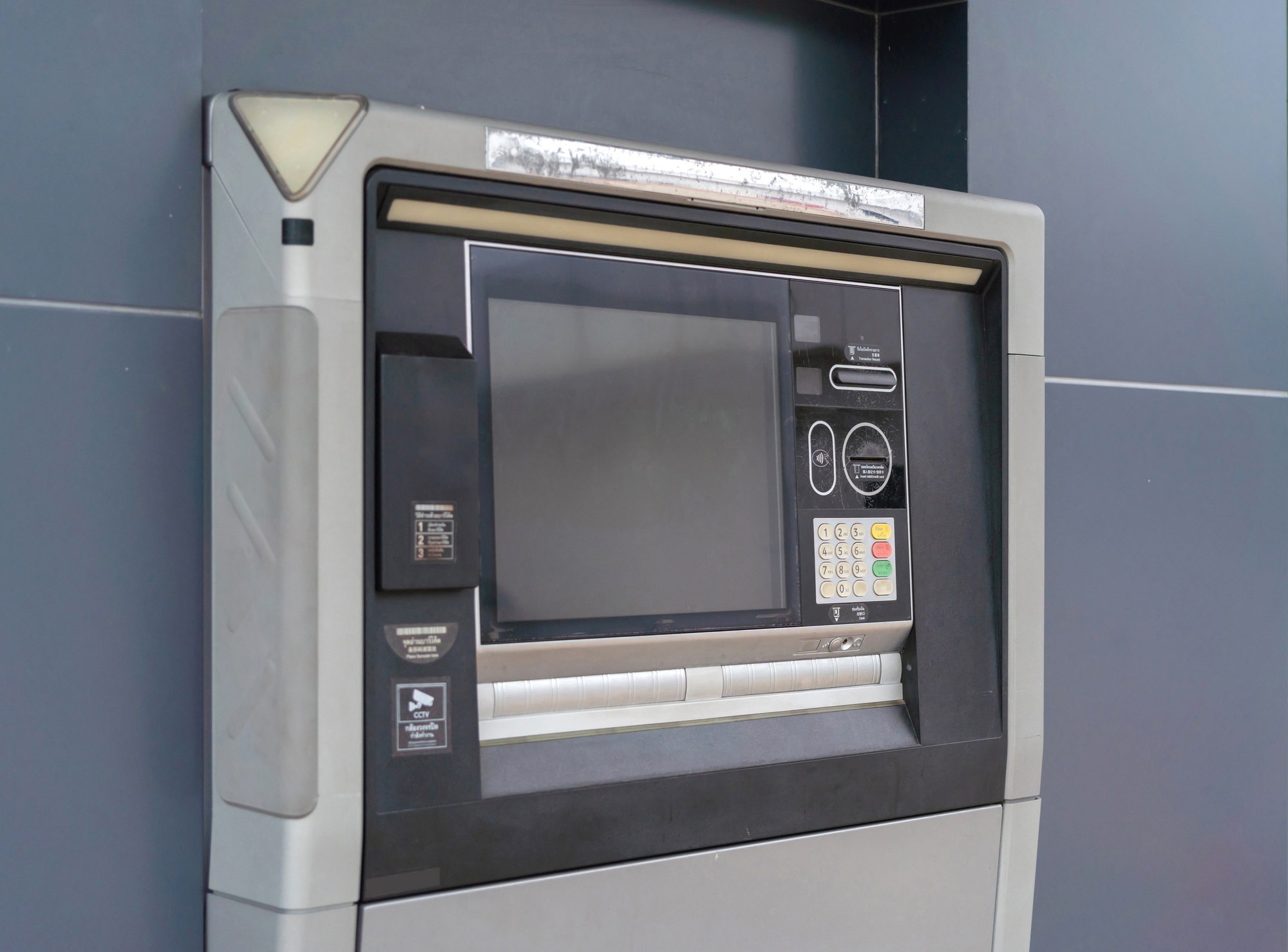
Starting an ATM business feels like standing on a diving board—exciting yet daunting. What challenges await, and how can you overcome them?
Solutions are within reach! Build strong relationships with business owners to make sure your ATM meets their needs, enhancing the customer experience. With a solid business plan and strategic foresight, you can steer these challenges and thrive in the ATM industry.
Cash Flow Management
Cash flow management is akin to steering a ship through stormy seas. To prevent capsizing, you must vigilantly track the cash flowing in and out. In the ATM business, your cash flow relies heavily on transaction fees and vault cash levels. How do you make sure a steady stream?
Start with thorough market research. Identify high-traffic locations like convenience stores and gas stations. This approach not only boosts revenue but also minimizes downtime. Simultaneously, monitor your operational costs and cash needs to maintain a healthy cash flow.
Consider reinvesting profits into expanding your ATM network. With careful planning and a strong business strategy, you can steer the complexities of cash flow management with confidence.
Maintenance and Compliance
Maintenance and compliance are necessary for your ATM business’s success. Imagine your machines as cars; without regular oil changes, they stall. How often do you think about the legal and regulatory requirements for operating ATMs?
Just like a driver needs a license, your ATMs must follow rules to run smoothly.
Consider this: placing an ATM in a high-traffic area means it must always be operational. What if it breaks down?
Think of the revenue lost! Routine maintenance checks prevent downtime and increase customer satisfaction. Plus, adhering to PCI standards protects you and your customers from fraud.
Investing in maintenance and compliance safeguards your machines and builds trust with business owners and customers. Wouldn’t you prefer a reliable ATM network that consistently generates surcharge revenue? It’s about establishing a solid foundation for your ATM business!
Finding the Right Locations
Finding the right locations for your ATM business is like selecting the perfect spot to plant a tree. You need a place rich in foot traffic—the sunlight that helps it flourish. Think about convenience stores and gas stations. Have you noticed the steady stream of customers?
More visitors lead to more ATM transactions.
To secure a prime location, look at thorough market research. This will help you identify your target market and find where cash is in high demand. High-traffic areas can generate substantial surcharge revenue. Consider this: if a location attracts 200 people daily, you could expect around 10 transactions per day, based on average foot traffic.
Build strong relationships with business owners to negotiate favorable terms for your ATM placement. They often enjoy reduced credit card costs and increased cash spending. A strong business plan is necessary for success, ensuring compliance with legal and regulatory requirements while maximizing your cash flow.
Prioritize locations with high visibility and customer activity. It’s like fishing in a pond full of fish—the more fish, the greater your chances of landing something big!
Marketing and Advertising
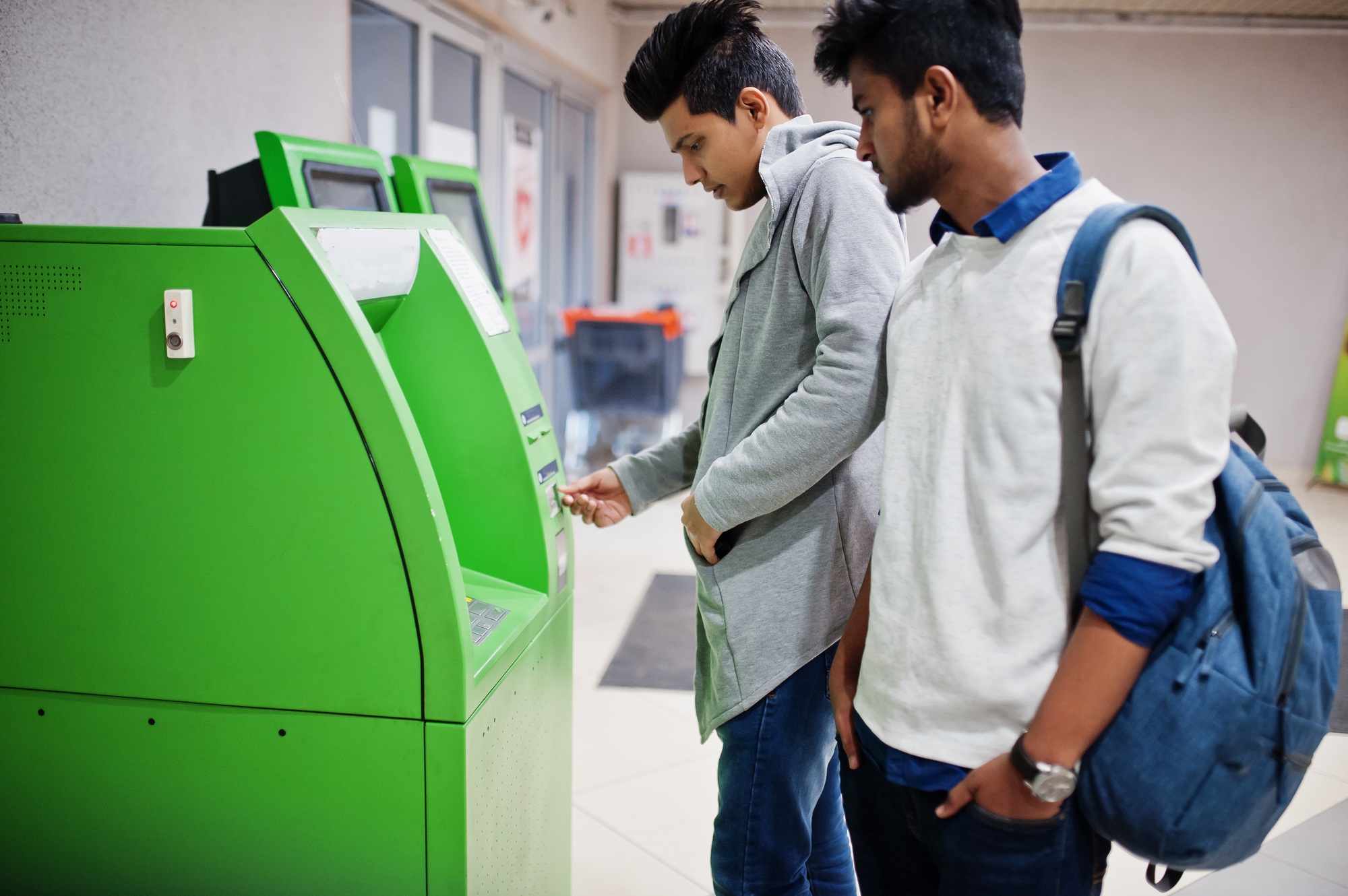
Starting an ATM business is like nurturing a money tree; it flourishes with strategic planning and the right conditions. Begin with thorough market research. Where’s the foot traffic?
Think of convenience stores, gas stations, and busy retail hubs—these spots can be treasure troves for ATM transactions.
Next, define your target market. Who will use your ATMs?
Grasping your audience is critical for crafting an effective marketing strategy. Use digital marketing and social media advertising to improve brand visibility and connect with potential customers.
Once you’ve identified prime locations, evaluate your ATM equipment. Will you buy or lease?
Each option has its pros and cons. Remember to factor in transaction fees and operational costs when calculating your potential revenue streams.
At last, make sure compliance with legal and regulatory requirements. This includes obtaining necessary licenses and understanding PCI compliance for secure transactions. Cultivating strong relationships with ATM operators and suppliers will fortify your business network.
Marketing and Promoting the ATM Business
To effectively market and promote your ATM business, a solid strategy is critical. Have you identified where your target customers congregate?
Consider high-traffic locations like convenience stores and gas stations—these are treasure troves for transaction fees and surcharge revenue.
Establishing strong connections with business owners is critical. How can you convince them that your ATM will increase their foot traffic?
Highlight the improved customer experience and the potential for additional income. Use digital marketing and social media advertising to increase brand awareness about your services.
Consider launching attractive promotional campaigns. For instance, offering reduced transaction fees can draw customers to your ATM over competitors. A well-crafted marketing plan can remarkably improve your cash flow and in general success. Are you ready to lift your ATM business?
Tips for Success
To thrive in your ATM business, start with thorough market research. Understand your target market and assess location options like convenience stores and gas stations. Think of your business plan as a roadmap; without it, you risk losing your way. Are you ready to reinvest profits and broaden your ATM network?
Launching an ATM business is like planting a seed. With careful nurturing and strategic planning, it will grow and provide lasting rewards!
Starting an ATM Business with Limited Funds
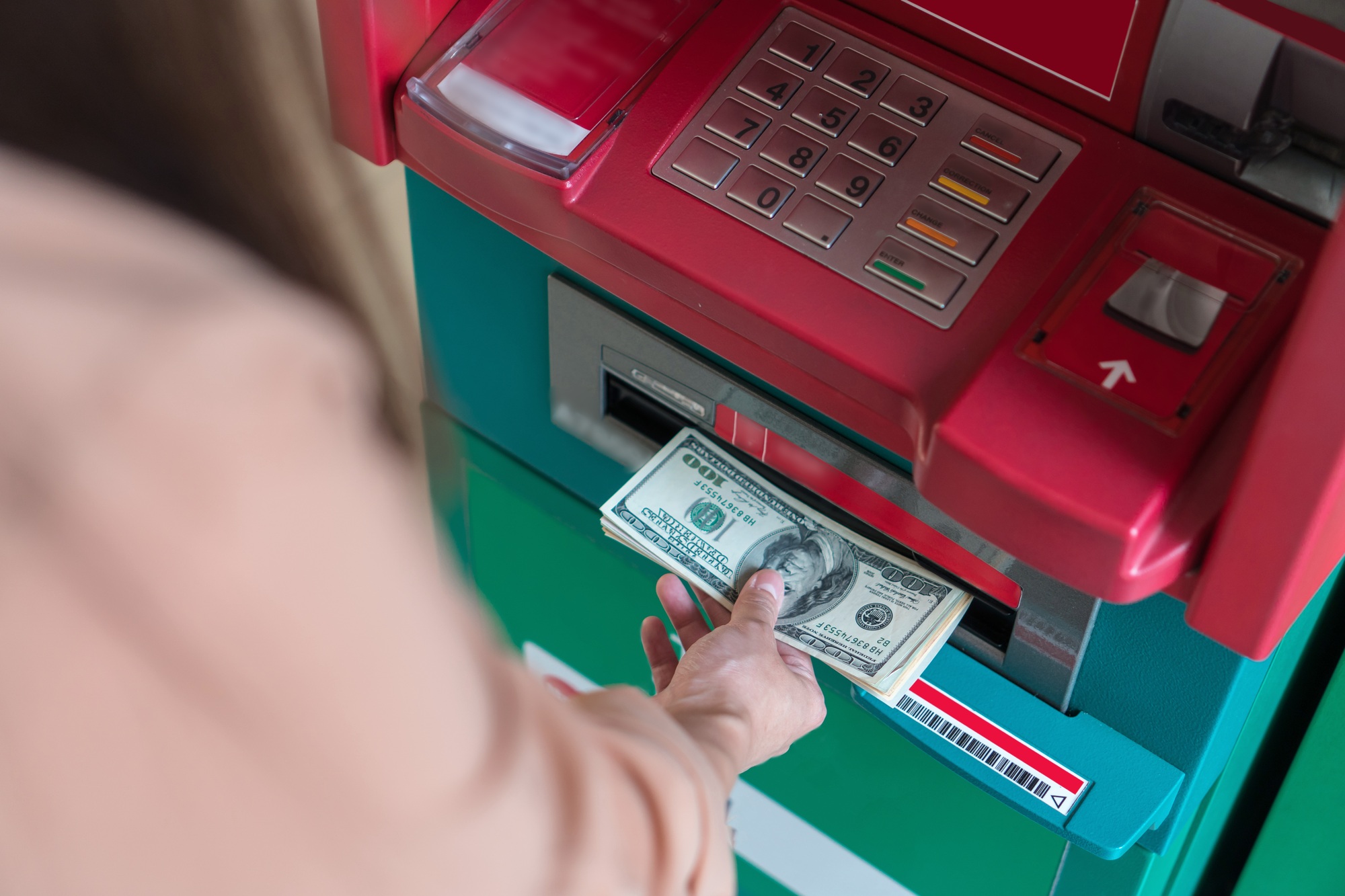
Starting an ATM business with limited funds can feel like climbing a steep hill without gears. But with the right approach, you can coast toward success! Initial, evaluate your startup costs; a single ATM usually costs between $2,000 and $3,000. If that number seems intimidating, consider alternatives. Have you thought about leasing or using a low-interest credit card? These options can ease your financial burden.
Next, conduct thorough market research. Identify high-traffic locations like convenience stores and gas stations. These spots are gold mines for ATM transactions. By placing your machine where cash is in demand, you can remarkably increase your revenue through surcharge fees.
A solid business plan is critical. Think of it as your GPS; it outlines your target market, financial projections, and strategies for ATM maintenance. Start small with one or two machines, allowing you to reinvest profits and gradually expand your ATM network.
At last, build strong merchant partnerships. These relationships can help you secure prime ATM locations and make sure a steady cash flow. In the ATM business, success hinges not just on the machines, but on the connections you nurture!
Using a Credit Card
Using a credit card to fund your ATM business is like planting a seed for future growth. You invest now to enjoy the fruits later. With average ATM transaction fees ranging from $2 to $3, you can quickly cover your credit card costs. But remember, just as a plant needs careful nurturing, you must manage your expenses wisely to avoid drowning in debt.
Consider these necessary tips when using a credit card:
Selecting the right ATM location can remarkably improve your passive income, making credit card financing a strategic move in your ATM network journey.
Leasing
Thinking about starting an ATM business on a budget?
Consider leasing—it’s like borrowing a bike instead of buying one. You get to enjoy the benefits without the hefty upfront costs. Leasing an ATM usually costs around $55/month, allowing you to generate surcharge revenue while testing your cash flow healthy.
Leasing dramatically lowers your startup costs, making it easier to enter the ATM market. Concentrate on securing prime locations, such as convenience stores and gas stations, where foot traffic is high. This approach helps you optimize transaction fees without the burdens of ownership.
Just like planning a successful road trip, understanding your target market is necessary. Leasing also paves the way for merchant partnerships, enhancing your ATM services and promoting sustainable business growth.
Applying for a Loan
Applying for a loan can feel like finding your way a maze. To succeed, you need to understand your cash flow and pinpoint exactly how much you need to borrow. Think of it as planting a seed; without the right soil, your ATM business won’t flourish. Consider these options:
A solid business plan is your best ally. It showcases your vision and details how you plan to generate revenue from ATM services. With a clear roadmap, you can confidently approach lenders and increase your chances of securing the funds you need.
Financing Options
Starting an ATM business with limited funds?
Exploring financing options is necessary. You might wonder, “How can I fund my ATM purchase without very costly?” Here are some innovative pathways:
Each financing option has its pros and cons. Credit cards offer quick access but may come with high interest rates. Loans, conversely, require thorough market research and a clear repayment strategy.
Your choice should align with your business model and cash needs. Remember, the right financing can be the rocket fuel that propels you toward success as a thriving ATM operator.
Common Mistakes to Avoid
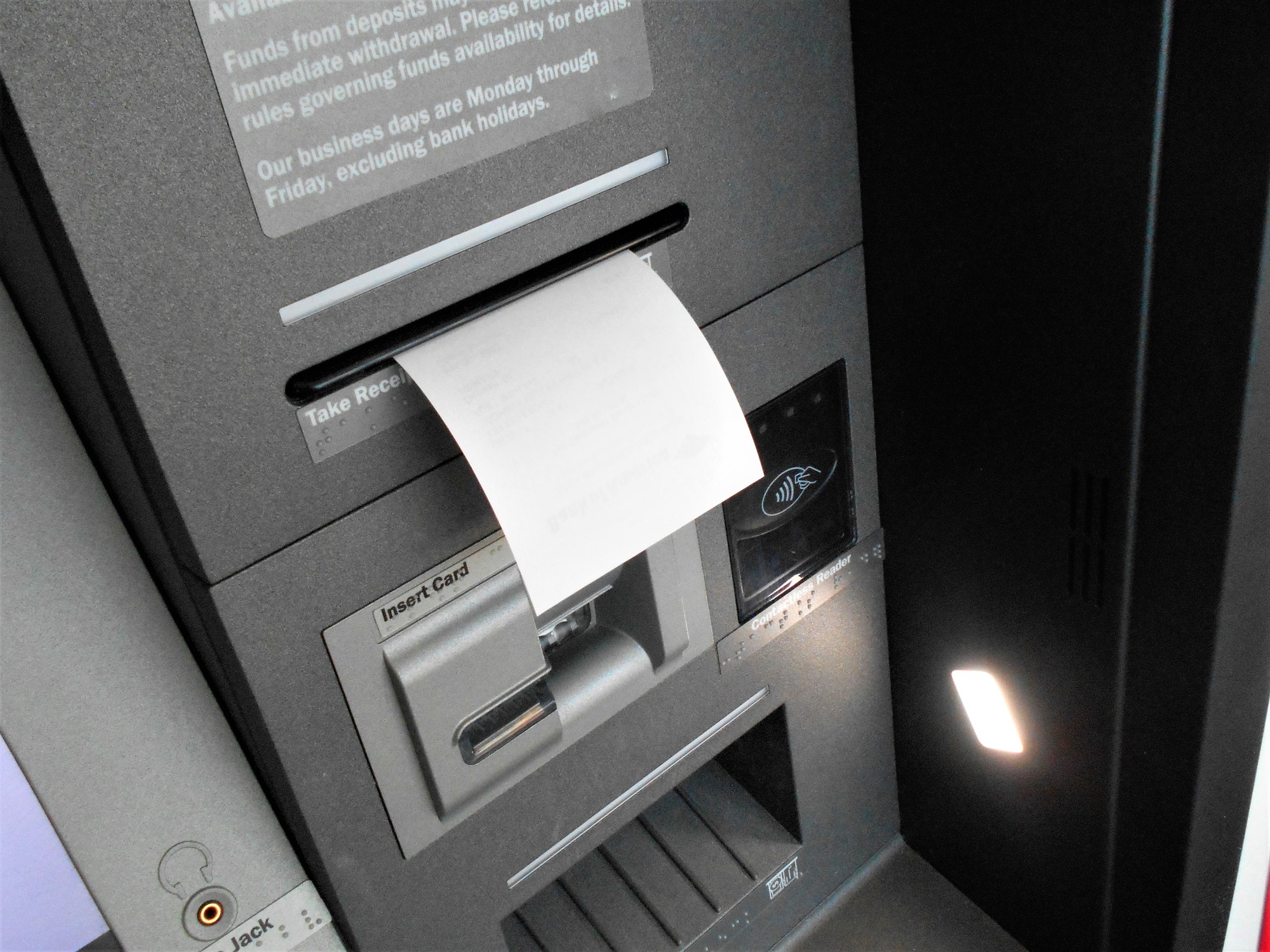
Launching an ATM business can be profitable, but many entrepreneurs trip over common pitfalls that threaten their success. Have you ever thought about the importance of cash flow?
Underestimating your cash flow needs is like sailing a ship without checking the weather; you risk getting caught in a storm. Aim for realistic income projections of $250 to $300 per machine monthly, instead of the inflated $500 often advertised.
Another common mistake is choosing used ATM equipment. While it may seem like a bargain, older machines can lead to costly repairs and downtime. Investing in new machines ensures compliance with EMV standards and comes with warranties, protecting your investment.
Have you considered the impact of location selection? Placing your ATMs in high-traffic areas like convenience stores or gas stations can remarkably increase transactions. But, securing signed contracts with merchants is critical to keep these prime spots.
At last, don’t overlook the significance of legal and regulatory requirements. A solid business plan that includes market research and compliance regulations will guide your journey. Remember, a well-structured strategy is your compass in the vast sea of the ATM industry!
Overestimating Cash Flow
Overestimating your cash flow is akin to building a sandcastle at low tide—visually stunning until reality washes it away. Many new ATM business owners expect substantial transaction fees but overlook critical factors like foot traffic and competition. A solid business plan requires thorough market research to project realistic income and manage operational costs effectively. How much cash do you truly need for vaults?
By adopting a conservative approach, you can confidently tackle unexpected expenses.
Underestimating Capital Requirements
Underestimating capital requirements is a common pitfall for aspiring ATM business owners. Imagine trying to fill a swimming pool with a garden hose; without enough water, it simply won’t fill up! Similarly, inadequate funds can leave your ATM machines parched, leading to significant cash flow issues.
Consider these necessary factors:
Ignoring these elements can leave your ATM network struggling to generate income, transforming your venture into a source of stress instead of profit!
Overlooking EMV
Neglecting EMV compliance can spell disaster for your ATM business. Imagine EMV as a fortress protecting your transactions, much like a secure lock on a treasure chest. Without EMV-ready machines, you risk fraud and hefty fines. Can you afford to jeopardize customer trust and your hard-earned profits?
Investing in new ATM equipment is critical for compliance and reliability. Just as a car needs the right fuel to run efficiently, your ATMs require state-of-the-art technology to function seamlessly. Every transaction boosts your surcharge revenue—don’t let outdated systems drag you down!
Poor Geography
Choosing the wrong ATM location is like planting a seed in barren soil—no growth, no profit. Have you considered foot traffic? High-traffic areas like convenience stores and gas stations are goldmines for ATM transactions. Without thorough market research, your ATM business risks failure.
Think of your ATM as a lighthouse; it must shine brightly in the right spot to draw in customers. Ignoring location selection can result in low transaction fees and a shrinking cash flow. Prioritize high-volume locations to optimize your surcharge revenue and watch your ATM network thrive.
Summing up
Starting an ATM business can be rewarding, but it comes with its own set of challenges. How do you steer clear of common mistakes?
Underestimating cash flow or choosing used machines is like trying to steer a ship with a leak—inevitably, you’ll sink. Prioritizing prime locations and testing your machines in top shape are necessary for seamless operations. With strategic planning and a solid business model, your ATM venture can thrive. Dedicate time to learning and preparation, and you’ll open up the potential for passive income.
Frequently Asked Questions
How much money do I need to start an ATM business?
To start an ATM business, expect to invest $2,000 to $10,000 for the machine, plus cash for transactions and installation costs.
Do you need a license to run an ATM?
Yes, you need a license to operate an ATM, along with compliance with local regulations and bank requirements.
How to start an ATM business step by step?
Research locations, choose the right ATM, secure funding, install properly, and maintain cash flow. Avoid used equipment!
Can a regular person own an ATM?
Yes, a regular person can own an ATM! With the right research, investment, and location, anyone can start their own ATM business.


